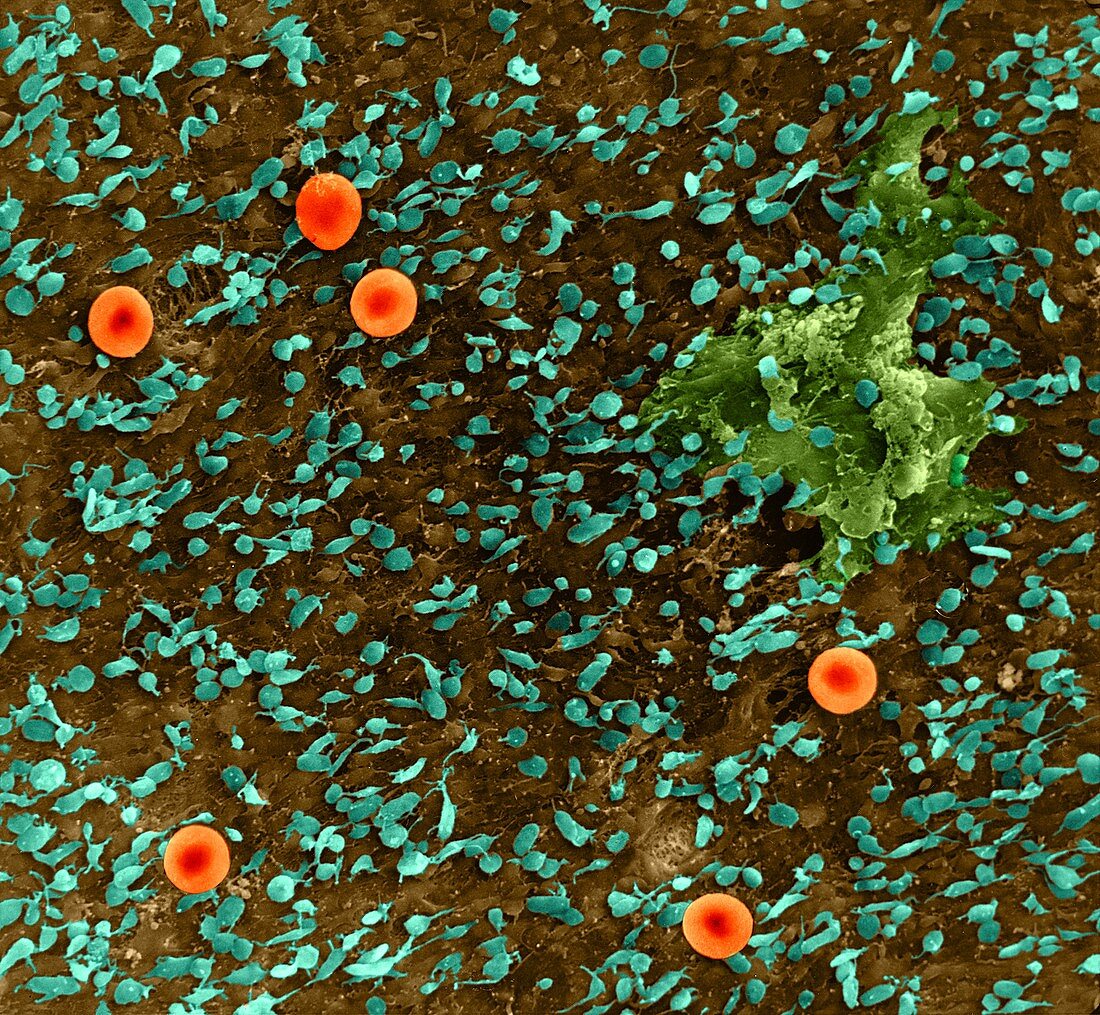Blood vessel surface after angioplasty , SEM
Bildnummer 12298203

| Blood vessel endothelial cell surface after angioplasty (balloon catheter embolectomy), coloured scanning electron micrograph (SEM). Note the numerous platelets, a macrophage and red blood cells. Red blood cells (RBCs), or erythrocytes, are the most common type of blood cell in vertebrates. They are involved in delivering oxygen to the body tissue. RBCs take up oxygen in the lungs or gills and release it into tissues while squeezing through the body's capillaries. The cytoplasm of RBCs is rich in haemoglobin, an iron-containing biomolecule that can bind oxygen and is responsible for the red color of the cells. The cell membrane is composed of proteins and lipids and this structure provides properties essential for physiological cell function (deformability and stability) while traversing the circulatory system, especially the capillary network. In humans, mature RBCs are flexible and oval biconcave disks. Magnification: x270 when shortest axis | |
| Lizenzart: | Lizenzpflichtig |
| Credit: | Science Photo Library / DENNIS KUNKEL MICROSCOPY |
| Bildgröße: | 3077 px × 2840 px |
| Modell-Rechte: | nicht erforderlich |
| Eigentums-Rechte: | nicht erforderlich |
| Restrictions: | - |
Preise für dieses Bild ab 15 €
Universitäten & Organisationen
(Informationsmaterial Digital, Informationsmaterial Print, Lehrmaterial Digital etc.)
ab 15 €
Redaktionell
(Bücher, Bücher: Sach- und Fachliteratur, Digitale Medien (redaktionell) etc.)
ab 30 €
Werbung
(Anzeigen, Aussenwerbung, Digitale Medien, Fernsehwerbung, Karten, Werbemittel, Zeitschriften etc.)
ab 55 €
Handelsprodukte
(bedruckte Textilie, Kalender, Postkarte, Grußkarte, Verpackung etc.)
ab 75 €
Pauschalpreise
Rechtepakete für die unbeschränkte Bildnutzung in Print oder Online
ab 495 €
Keywords
- abnormal,
- Angioplastie,
- Arterie,
- Blutgefäß,
- Blutplättchen,
- Endothel,
- endothelial,
- Epithel,
- epithelial,
- Epithelien,
- Erythrozyt,
- Erythrozyten,
- farbig,
- gefärbt,
- Hämoglobin,
- Kreislauf,
- Makrophagen,
- medizinisch,
- Mensch,
- menschlicher Körper,
- rasterelektronenmikroskopische Aufnahme,
- REM,
- rote Blutkörperchen,
- thrombozyten,
- ungesund
